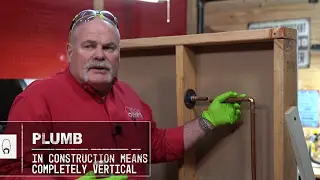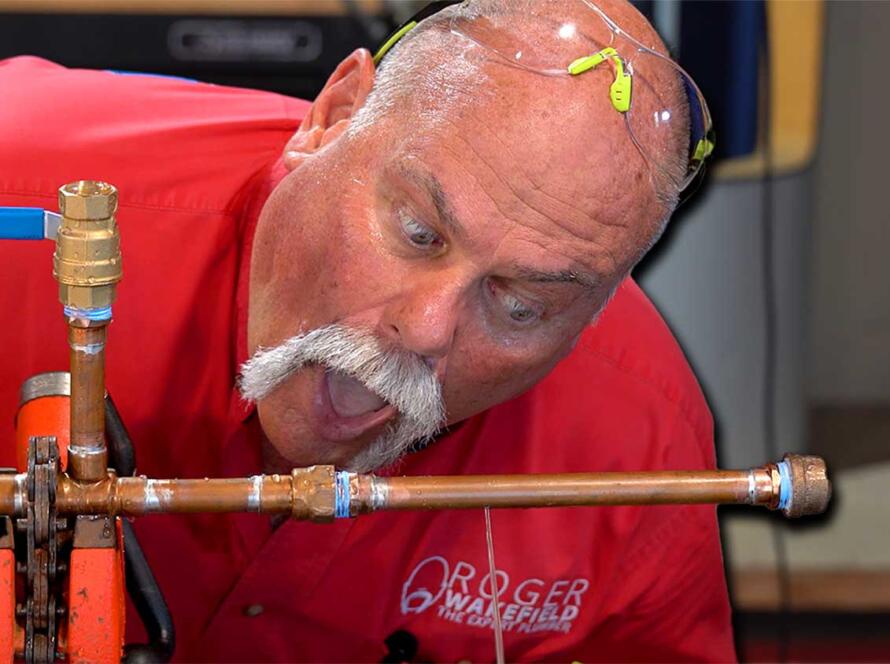Below, we break down Cameron’s approach to van organization and highlight why such a system matters for both efficiency and customer satisfaction. If you’re a plumber (or any mobile service tech) searching for fresh ideas on how to kit out your ride, or you’re just intrigued by what goes on behind the scenes, read on. We’ll cover how Cameron stores fittings, where he keeps his frequently used tools, how to manage big gear like sewer machines, and the best ways to keep track of everything on board.
Why a Well-Organized Van Matters
- Time is Money
Every minute spent rummaging through shelves or containers is a minute not spent solving the customer’s problem. Over a day, week, or year, wasted time adds up. A neat layout means you can grab parts or tools in seconds. - Professional Image
When customers see a tidy, stocked van, they perceive you as a true professional who takes pride in your work. It fosters trust—especially if the homeowner has to peek inside while you’re retrieving parts. - Inventory Control
With clear labeling and standard spots for each fitting, you can see at a glance if you’re running low on a crucial component. No more last-minute runs to the supply house for something you “thought” you had. - Safety
A cluttered van can become a hazard—power tools might shift, heavy objects can roll around, and loose debris can cause slips. Using stable racks and designated containers ensures you won’t have to worry about gear falling or sliding into the driver’s seat.
The High-Roof Advantage
One standout feature of Cameron’s van is the ability to stand upright inside, thanks to a high-roof design. Not every plumber has that luxury, but if you’re shopping for a new vehicle, consider the benefits:
- Less Strain: Constantly ducking or crouching can lead to back pain over time. A tall interior height helps you move freely.
- Greater Storage: With taller shelves and vertical racks, you can double up your storage capacity.
- Improved Organization: High-roof vans often have extra overhead compartments or ceiling-mounted racks for longer items like pipe or rods.
The Layout: Shelving, Drawers, and Buckets
Shelving Along the Sides
In Cameron’s van, tall racks line the walls, holding various bins and drawers that store fittings, couplings, valves, and more. He points out that his strategy is to place daily essentials within easy reach, ensuring minimal stooping or shuffling.
- Lower Shelves: He keeps heavier materials like big PVC fittings, tubs of copper parts, or gas fittings on the bottom, so he doesn’t have to lift them overhead.
- Middle Shelves: This zone is for medium-weight supplies or items he uses frequently—things like washers, aerators, or commonly used faucet parts.
- Upper Shelves: Perfect for lighter or less-frequently-used items. For example, specialized cartridges for certain brand faucets might go up top.
Drawer Systems for Small Parts
Cameron has multiple drawers dedicated to specific categories: toilet hardware, rubber washers, or PEX fittings. Although the arrangement might look random to outsiders, each drawer has its own theme, like:
- Brass Fittings and Adapters: One drawer might be for brass or CPVC-to-brass transition pieces.
- Wax Rings, Bolts, and Gaskets: Another drawer for toilet repair essentials—complete with tank bolts, spud gaskets, and extra washers.
- Repair Cartridges: Shelves or drawers for Moen, Delta, and other brand cartridges keep him from digging through random bins.
Working from the Bucket
Interestingly, Cameron prefers to keep his daily hand tools in a 5-gallon bucket. This bucket can travel from the van to the job site easily, and it’s large enough to hold smaller items, like adjustable wrenches or putty. A caddy or a bucket organizer can add extra pockets around the rim for screwdrivers, pliers, and tape.
Why a Bucket?
- Grab-and-Go: One handle, fewer trips.
- Fewer Mixed-Up Tools: A tray can get jumbled quickly, but a bucket can be subdivided or stacked with a seat on top for convenience.
- Versatility: Buckets can carry water, collect debris from a drain, or serve as a seat if you’re crouching to fix a leak.
Essential Tools and Gadgets
Sewer Machine and Camera
No modern plumbing van is complete without a drain-cleaning machine. Cameron’s rig includes a compact sewer machine that can handle typical residential lines. Alongside that, he carries a camera reel and locator for inspections. The camera uses a pushrod cable, which feeds into the line to identify blockages or damage, while the locator helps trace the camera head underground.
- Milwaukee Camera System: Cameron mentions the system’s clarity and how easily it pairs with a tablet. That means he can show customers real-time footage or record for later review.
- Locator (Star Wars Gun): The device that picks up the camera signal is nicknamed the “Star Wars gun” because kids find it cool. Not only does it help locate the camera head, but some locators also have the functionality to pick up a line trace signal if you put a transmitter on a water line.
Press and Fitting Tools
He keeps multiple sets of channel-lock pliers, adjustable wrenches, and press tools. The mention of “press on lock” references tools for pressing copper or PEX fittings. Having them within arm’s reach can slash installation time on reroutes or water line repairs.
Power Tools in Easy Reach
Cameron stores his cordless drill, impact driver, and reciprocating saw near the side door. This way, he can open the door, grab the tool, and walk right to the house. Smaller power tools might fit in a rolling bin or dedicated cubby.
Specialty Items (Kinetic Water Ram, for instance)
Though not specifically mentioned in the van, advanced or niche items like a kinetic water ram or leak detection equipment might also find a home in well-organized compartments. If your business offers slab leak isolation, you might have specialized hoses, test balls, and gauges neatly stowed in a labeled container.
Stocking Disposals and Fixtures
Spare Garbage Disposals
Cameron consistently keeps at least one or two disposals in stock. Why? If a customer calls about a jammed or rusted disposal, you can swap it on the spot, no run to the supply house necessary. This is a classic example of how readiness translates to upsells and quick solutions.
Extra Faucets or Toilet Parts
Not every plumber carries brand-new faucets, but at least carrying universal repair kits or brand-specific repair cartridges can net more sales. If the homeowner sees you have a polished, matching faucet in your van that meets their needs, they may opt for a total upgrade on the spot.
Tips for New Techs (or Anyone Reorganizing)
- Group by Job Type: If you frequently do water reroutes, keep PEX fittings, PEX cutters, and expansion tools in one section so you can grab everything at once.
- Keep the Heavy Stuff Low: It reduces strain lifting it in or out. Plus, it lowers your van’s center of gravity, aiding stability.
- Label, Label, Label: Even if you know where things are, labeling drawers or bins helps an apprentice or coworker find items without bugging you.
- Schedule Cleanup Time: Set aside 15–30 minutes at least once a week to reorganize, restock, and discard trash. Some pros do this daily at the end of shifts.
- Track Inventory: Use a simple notepad or an app. When you notice you’re on your last few couplings, jot it down so you can refill from your shop’s supply.
Conclusion
A plumbing van is more than just a mode of transportation—it’s a mobile workshop. With the right arrangement of shelves, drawers, tools, and an intuitive layout, you can boost your efficiency on every call. In “2023 Plumbing Van Tour,” Cameron shows how even a single plumber can keep track of myriad items without rummaging around or wasting time.
From the daily bucket of hand tools to the overhead camera system, his van blends convenience and professionalism. If you’re organizing your own rig, consider adopting a similar approach: place frequently used gear at easy-to-grab height, label bins, store heavier loads down low, and stash advanced items—like cameras or press tools—in dedicated spaces.
Remember, a tidy van doesn’t just save you time; it projects confidence and expertise to customers. And as Cameron points out, the right layout can turn that van into a fully functional workshop, letting you solve more problems on the spot and ultimately earn more.




